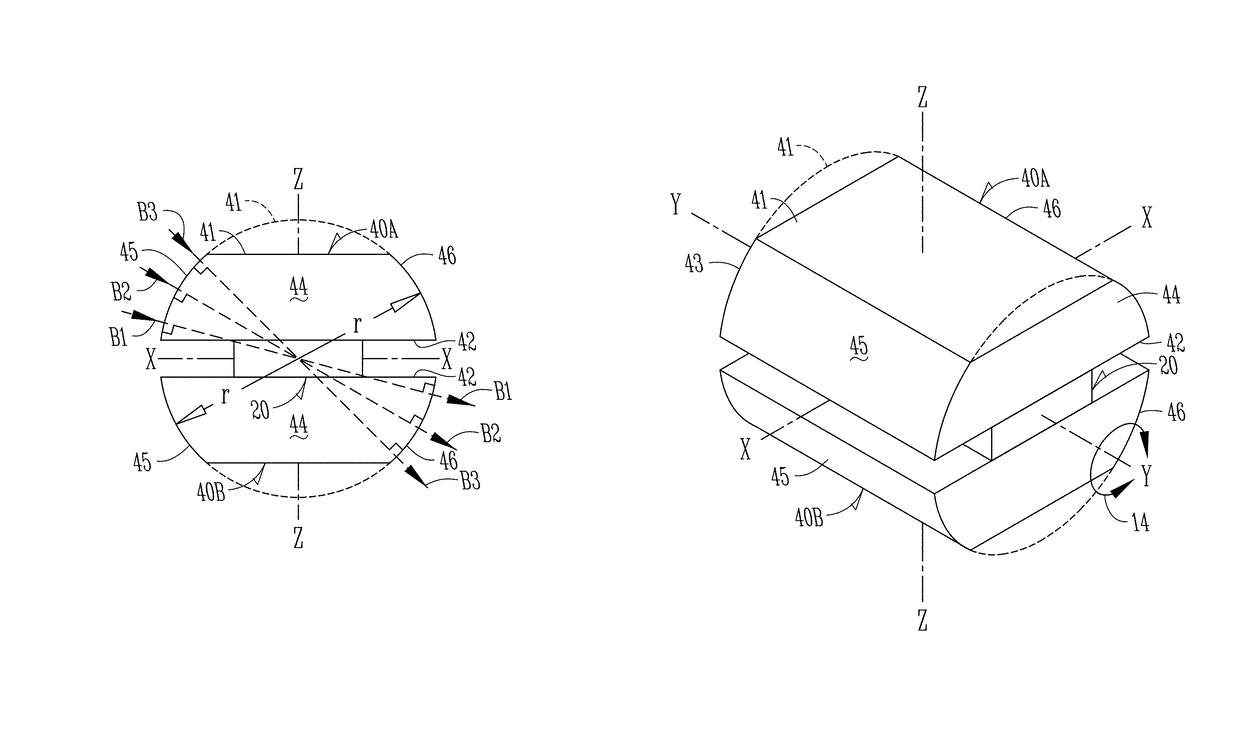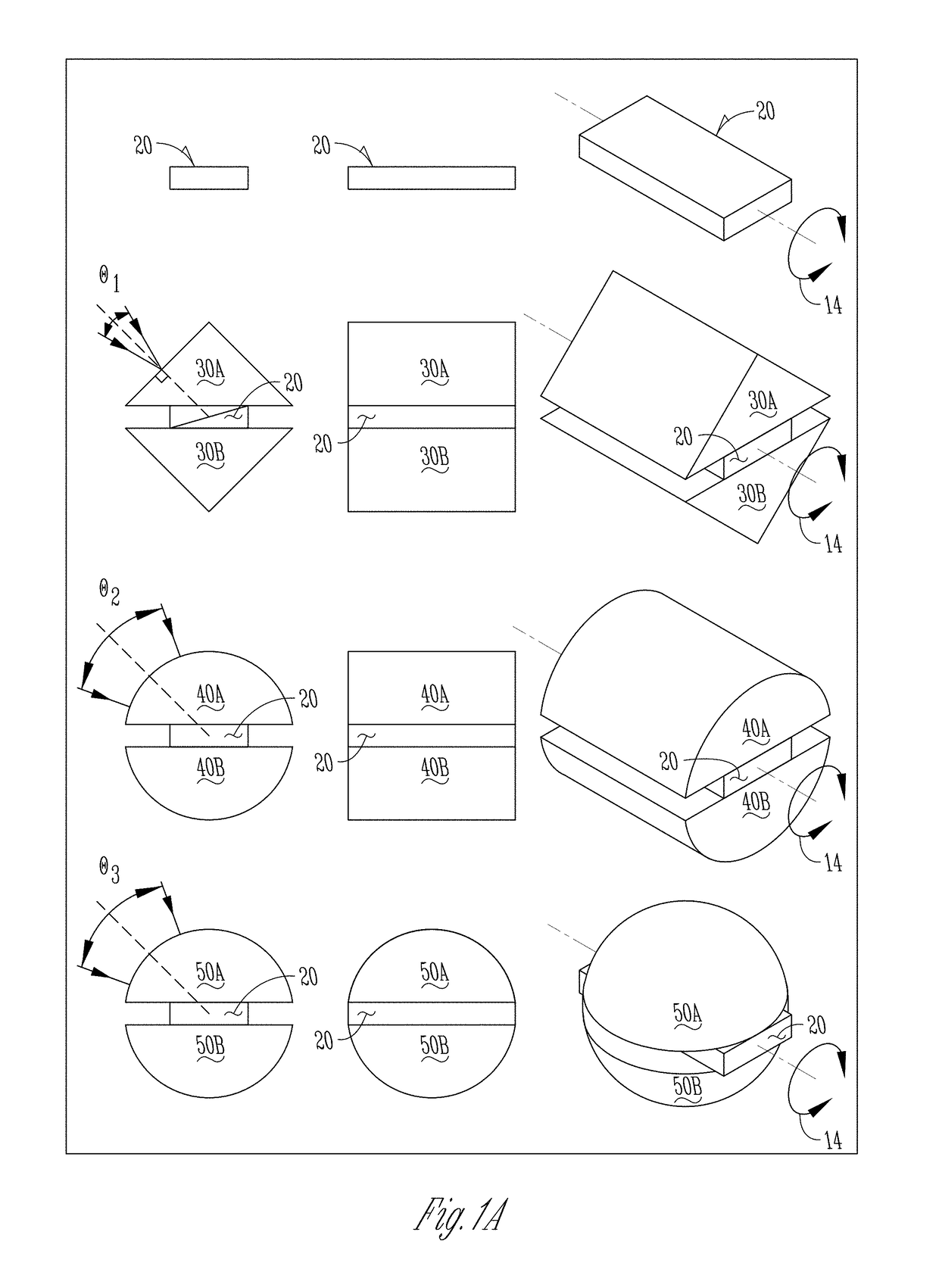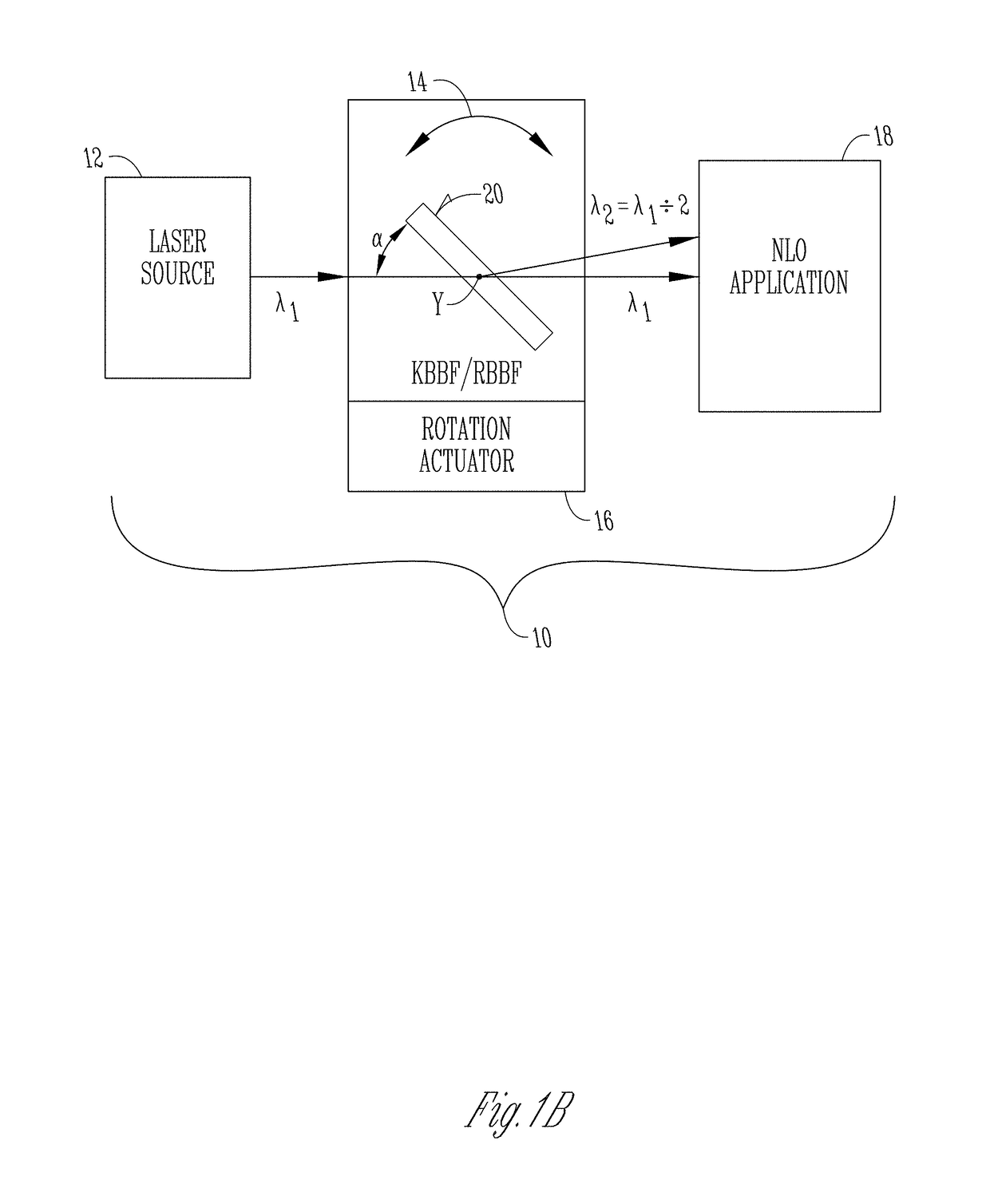Double lens device for tunable harmonic generation of laser beams in KBBF/RBBF crystals or other non-linear optic materials
a laser beam and harmonic generation technology, applied in the field of harmonic generation of laser beams in nonlinear optical (nlo) materials, can solve the problems of limiting the wavelengths that can effectively be utilized, affecting so as to reduce or minimize reflection loss and increase the efficiency of optical coupling
- Summary
- Abstract
- Description
- Claims
- Application Information
AI Technical Summary
Benefits of technology
Problems solved by technology
Method used
Image
Examples
first specific exemplary embodiment
[0049]Instead of prisms or slabs, FIGS. 4A-C illustrate use of dual lenses 40A and 40B at opposite faces 21 and 22 of crystal 20. Each lens 40A or B in this embodiment is characterized as follows:[0050]a. CaF2 material—economically formed and handles laser energy at the power levels needed.[0051]b. Plano-cylindrical—planar side 42 covers at least a substantial area of surface 21 or 22 of crystal 20, has at least convex side portions 45 and 46 and a curved top or apex 41 (dashed lines), and opposite ends 43 and 44.[0052]c. Optional flattened apex—by polishing, machining, or other methods creates a substantially planar apex 41 (solid lines) at least substantially parallel to planar side 42. This is optional but can be beneficial as an interface for application of mechanical force towards crystal 20 in the Z axis direction. It can promote better optical coupling, as is well appreciated by those skilled in the art.[0053]d. Radius r is at least substantially centered at the origin of axe...
second specific exemplary embodiment
[0060]Plano-spherical lenses 50A and 50B can be used instead of plano-cylindrical lenses. See FIGS. 5A-C. Again, the form factor normally should cover at least the XZ plane through crystal 20 and the radius of curvature of convex sidewall 55 should be constant from the center of crystal 20 (radii r for each lens 50A and 50B in FIG. 5A should be equal).
[0061]It should be noted that plano-spherical lenses also promote minimized reflection losses over an operative range of angles of incidence with its convex surface (entering or exiting). This produces similar advantages to the plano-cylindrical lenses 30.
[0062]But it is to be appreciated that plano-spherical lenses 50A and 50B can be beneficial in instances where a tightly controlled exiting laser spot is not needed, desired, or important, and where there is tolerance for some spherical aberration. It is more difficult to precisely align beam B and convex side portion 45 of lens 40A to produce precisely perpendicular / orthogonal angle ...
third specific exemplary embodiment
[0064]An alternative embodiment is illustrated in FIGS. 6A-C. Plano-cylindrical lens 50 and plano-cylindrical lens 40 sandwich crystal 20.
PUM
 Login to View More
Login to View More Abstract
Description
Claims
Application Information
 Login to View More
Login to View More - R&D
- Intellectual Property
- Life Sciences
- Materials
- Tech Scout
- Unparalleled Data Quality
- Higher Quality Content
- 60% Fewer Hallucinations
Browse by: Latest US Patents, China's latest patents, Technical Efficacy Thesaurus, Application Domain, Technology Topic, Popular Technical Reports.
© 2025 PatSnap. All rights reserved.Legal|Privacy policy|Modern Slavery Act Transparency Statement|Sitemap|About US| Contact US: help@patsnap.com



